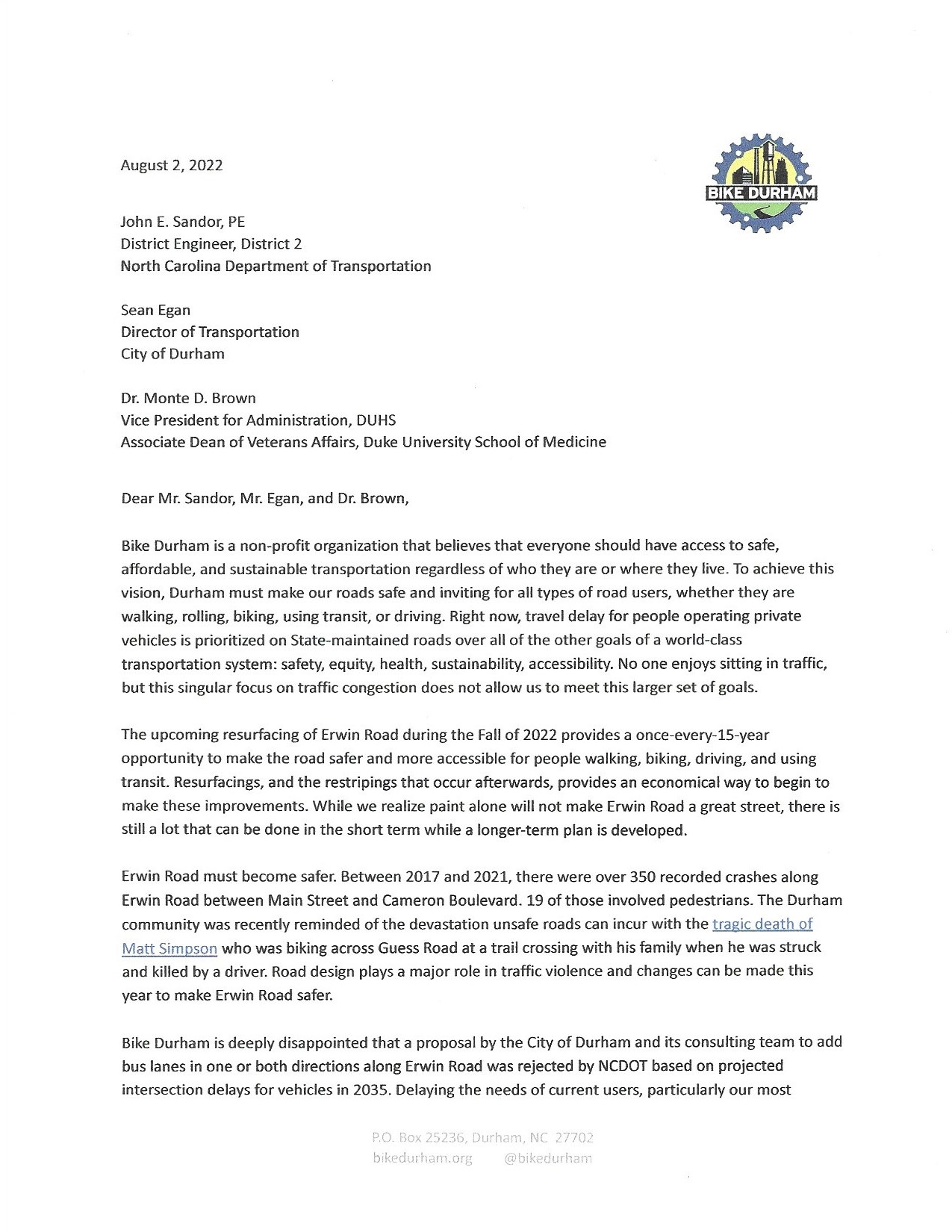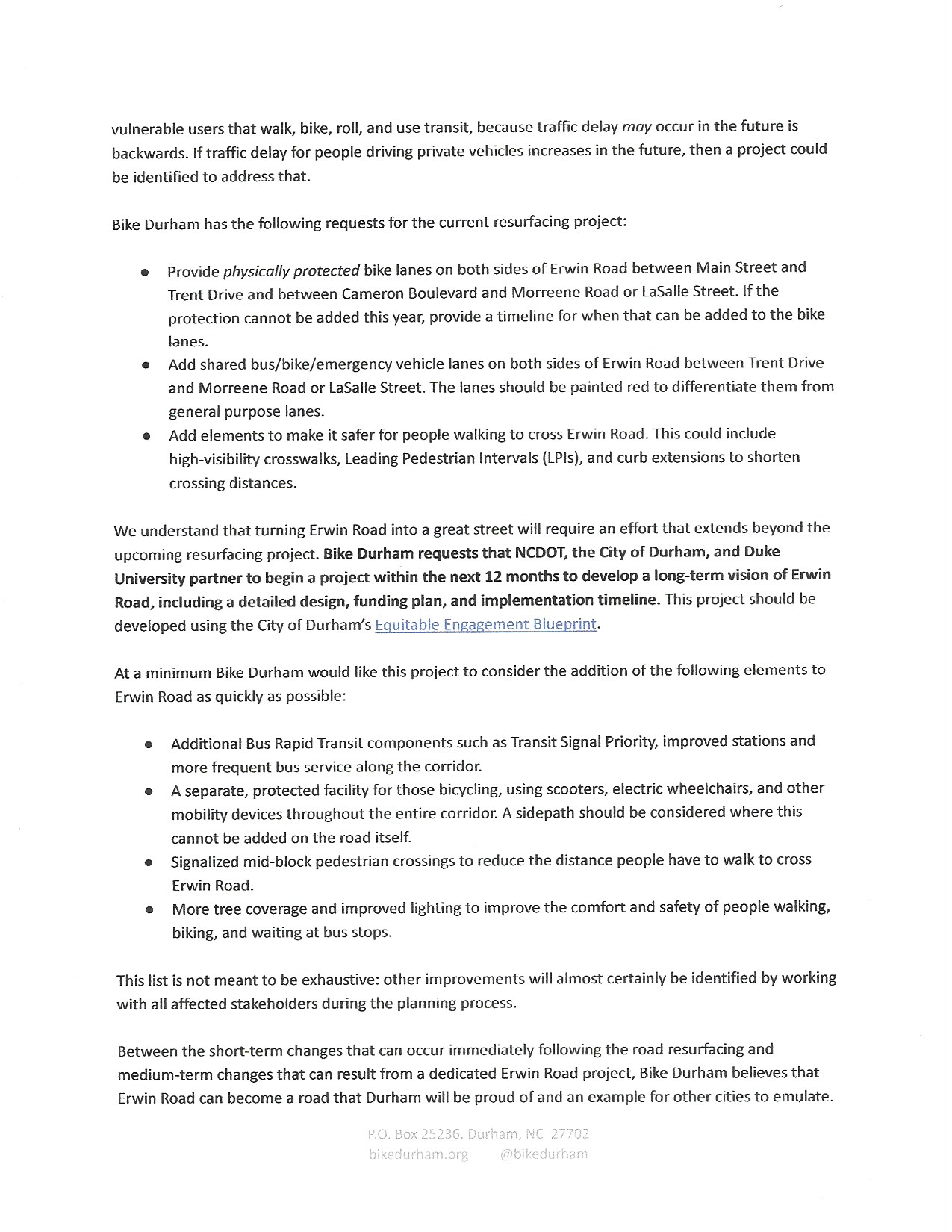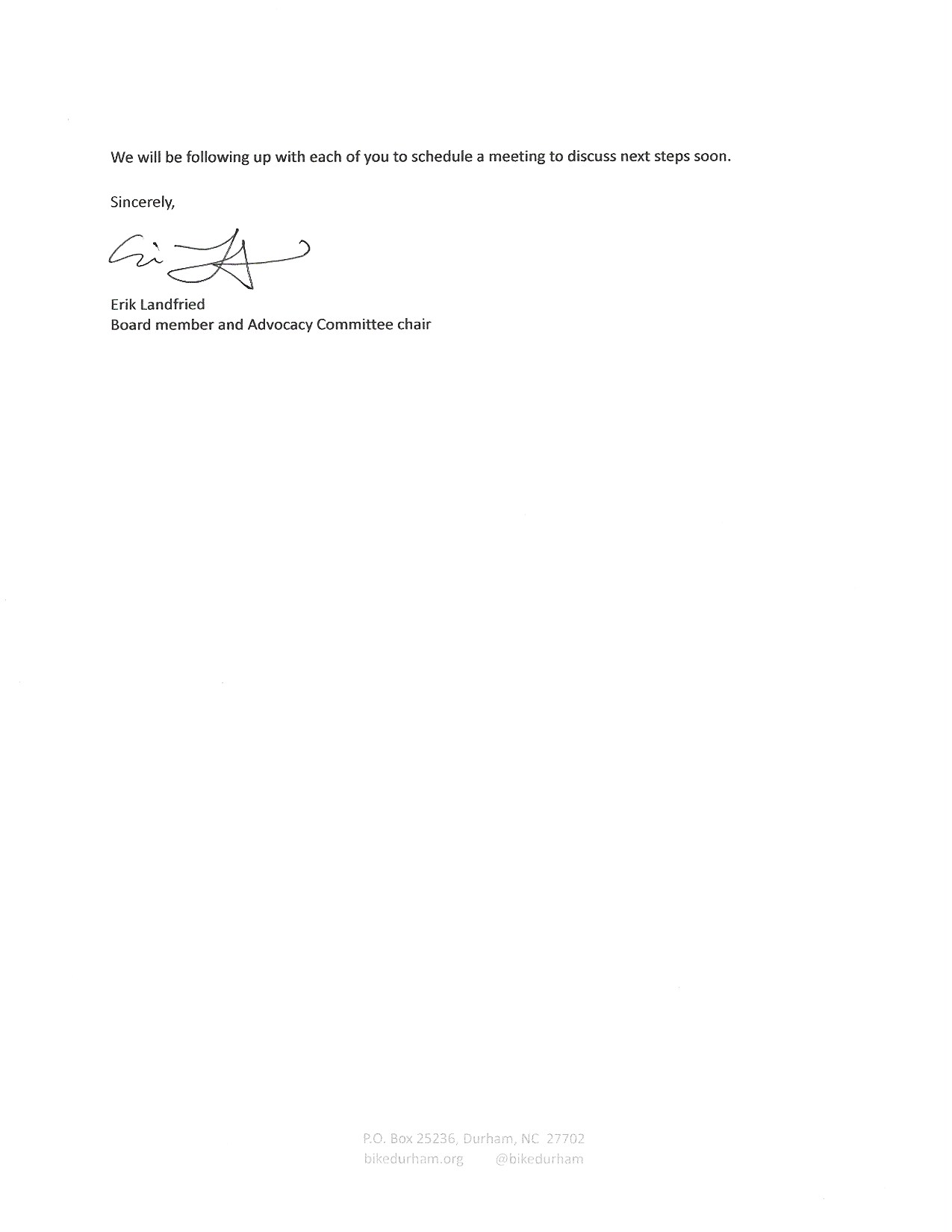As the community transportation planner for Durham Public Schools, I spend my days observing, planning, and coordinating ways to improve multi-modal school travel, this day is as close as we come to a holiday in my line of work (in addition to Bike and Roll to School Day, Bus Driver Appreciation Day, and Crossing Guard Appreciation Day).
Walk, Bike, and Roll to School events promote physical activity, sustainable travel, and strengthen social connections between families, schools, and the broader community. These events celebrate active travel to school and can also help build awareness for the need to prioritize the safety of young people walking and bicycling.
Walk to School event at Merrick-Moore Elementary in Spring 2022
I sometimes feel conflicted when a walking and biking to school event requires detailed coordination, permission slips, and law enforcement support to close streets or to escort families along a route. I don’t dispute that these precautions are often necessary, but I also think it makes these events look like an extraordinary undertaking, when really, walking or rolling to school should be an easy, everyday occurrence—a choice that is safe, comfortable, and familiar for every family that lives close to the school their student attends. The ability to walk, bike, or roll to school can also foster independence and ensure that students observe and experience their world at a human-scale, not just through the passenger window of a vehicle.
I see two key domains when it comes to increasing the number of families whose students can walk, bike, ride the school bus, or take transit—our built environment (i.e., land use, street design) and our social context (i.e., social norms, policies). We need to turn the tide on both fronts while also considering how these domains influence each other.
A safer, more inviting environment for multi-modal school travel could look like streets with lower driver speeds and vehicle volumes; more dedicated space for walking and biking; conspicuous and accessible crossing locations; and a robust network of transit options. Ultimately, streets that work for our youth will work better for everyone. I recognize that the location and design of school sites also affects transportation outcomes for our students. While Durham Public Schools (DPS) can pursue initiatives that improve the safety and efficiency of internal site circulation and access onto campuses, we value our positive working relationships with the City of Durham, North Carolina Department of Transportation (NCDOT), Durham County, and the Durham-Chapel Hill-Carrboro Metropolitan Planning Organization (DCHC MPO) to keep school travel in mind when identifying and prioritizing local and regional transportation projects.
Walk, Bike, and Roll to School Day activity for Pearsontown Elementary School in May 2022
Safer streets are game changers for encouraging active travel, but we still need the next generation of Durham residents to be able and excited to ride bikes and to choose walking or riding transit when those modes are reasonable options for a trip. We also want the next generation to know what is possible when it comes to the design of our cities and how we get around so they can continue advocating for improvements. Bike Durham’s Safe Routes to School program, supported through a contract with the City, provides education and encouragement for walking, biking, and rolling to school. Teaching Bike Riding and Walking Safety skills during physical education classes and coordinating Walk, Bike, and Roll to school events are important steps for shifting our transportation culture. Bicycle riding and walking safety education involves the development of skills, not solely the acquisition of knowledge, so it’s significant that these weeks-long classes provide the time and space for students to practice. The classes also have a multiplying effect since they empower physical education teachers to teach the curriculum in the future and as a conclusion to the classes, Bike Durham plans a bike festival at the school so that families can observe and celebrate their student’s improved bicycling skills.
My children are four and a half and one and a half. My older child has been to a few Walk, Bike, and Roll events for my own version of “bring your daughter to work day.” When we are going somewhere new, she usually asks me if it will be a walk or drive. I’m dreading the day when she stops asking because she realizes that so many of our trips are drives.
Kristen Brookshire with her young daughter
I’m glad we have Walk, Bike, and Roll events at least twice a year for the smiles they bring to the faces of thousands of students and for the visual reminder to grown-ups to stop and think about what it would take to see kids walking and biking more often. These events have taken place around the country for over 25 years and there is a good reason—they can inspire change. These changes could range from improving a single pedestrian crossing or PTA-led monthly events or walk audits, to a city-wide school traffic safety committee or a new school district policy codifying the importance of active school travel.
I hope you’ll be out walking on Wednesday, October 12 or cheering along the kids walking and rolling in your neighborhood!
Kristen Brookshire
Community Transportation Planner
School Planning, Transportation, and Nutrition
Durham Public Schools





























